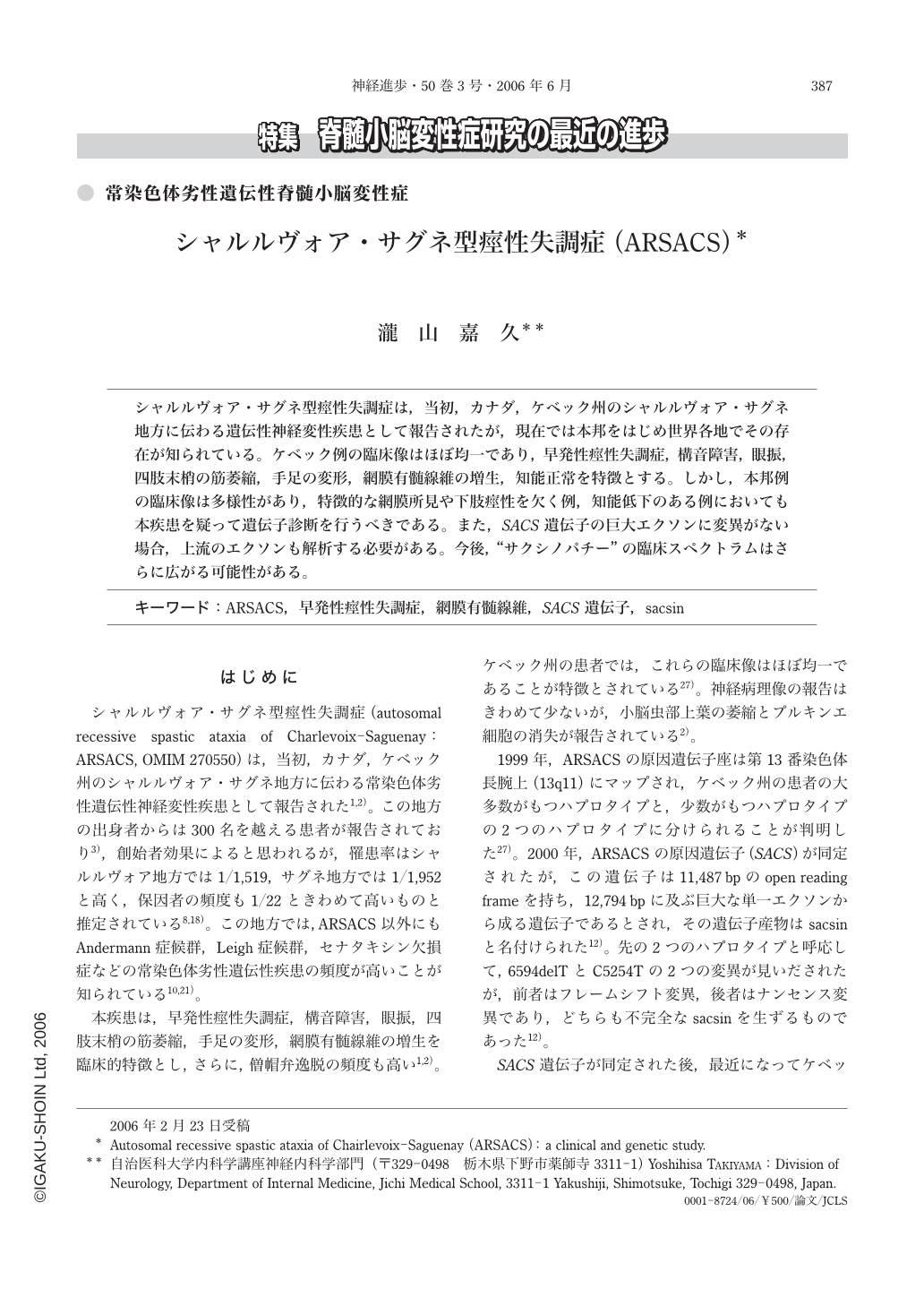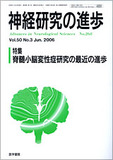Japanese
English
- 有料閲覧
- Abstract 文献概要
- 1ページ目 Look Inside
- 参考文献 Reference
シャルルヴォア・サグネ型痙性失調症は,当初,カナダ,ケベック州のシャルルヴォア・サグネ地方に伝わる遺伝性神経変性疾患として報告されたが,現在では本邦をはじめ世界各地でその存在が知られている。ケベック例の臨床像はほぼ均一であり,早発性痙性失調症,構音障害,眼振,四肢末梢の筋萎縮,手足の変形,網膜有髄線維の増生,知能正常を特徴とする。しかし,本邦例の臨床像は多様性があり,特徴的な網膜所見や下肢痙性を欠く例,知能低下のある例においても本疾患を疑って遺伝子診断を行うべきである。また,SACS遺伝子の巨大エクソンに変異がない場合,上流のエクソンも解析する必要がある。今後,“サクシノパチー”の臨床スペクトラムはさらに広がる可能性がある。
Autosomal recessive spastic ataxia of Charlevoix-Saguenay(ARSACS) was originally found among inhabitants of the Charlevoix-Saguenay region of Quebec in Canada. This disease is a neurodegenerative disorder characterized by early-onset spastic ataxia, d ysarthria, nystagmus, distal muscle wasting, finger and/or foot deformities, and retinal hypermyelination.
In 2000, the gene responsible for ARSACS(SACS) was identified in Quebec patients. The SACS gene consists of a single gigantic exon spanning 12,794 bp with an 11,487-bp open reading frame and encodes the protein sacsin. To date, over 20 mutations in the gigantic exon have been found in Quebec and non-Quebec patients including ones in Japan, Italy, Tunisia, Turkey, and Spain, and ARSACS thus shows a worldwide occurrence.
So far,we have identified seven SACS mutations(two missense, four deletion, and one nonsense one)in six Japanese families with ARSACS, and have analyzed the clinical features of nine patients. Although Quebec patients show a homogenous phenotype, our studies revealed some atypical clinical features in our patients, as follows:slightly later onset than that in Quebec patients, absence of retinal hypermyelination, intellectual impairment, and lack of spasticity.
Recently, eight new exons located upstream of the gigantic one were found(GenBank, AL157766). We found a patient with a compound heterozygous mutation(32627-32636delACACTGTTAC and 31760delT)in a new exon of the SACS gene. Thus, the new exons upstream of the gigantic one should be analyzed when a case is clinically compatible with ARSACS, even without any mutation in the gigantic exon. As more SACS mutations are identified in the world, the clinical spectrum of‘sacsinopathies'will expand.

Copyright © 2006, Igaku-Shoin Ltd. All rights reserved.


